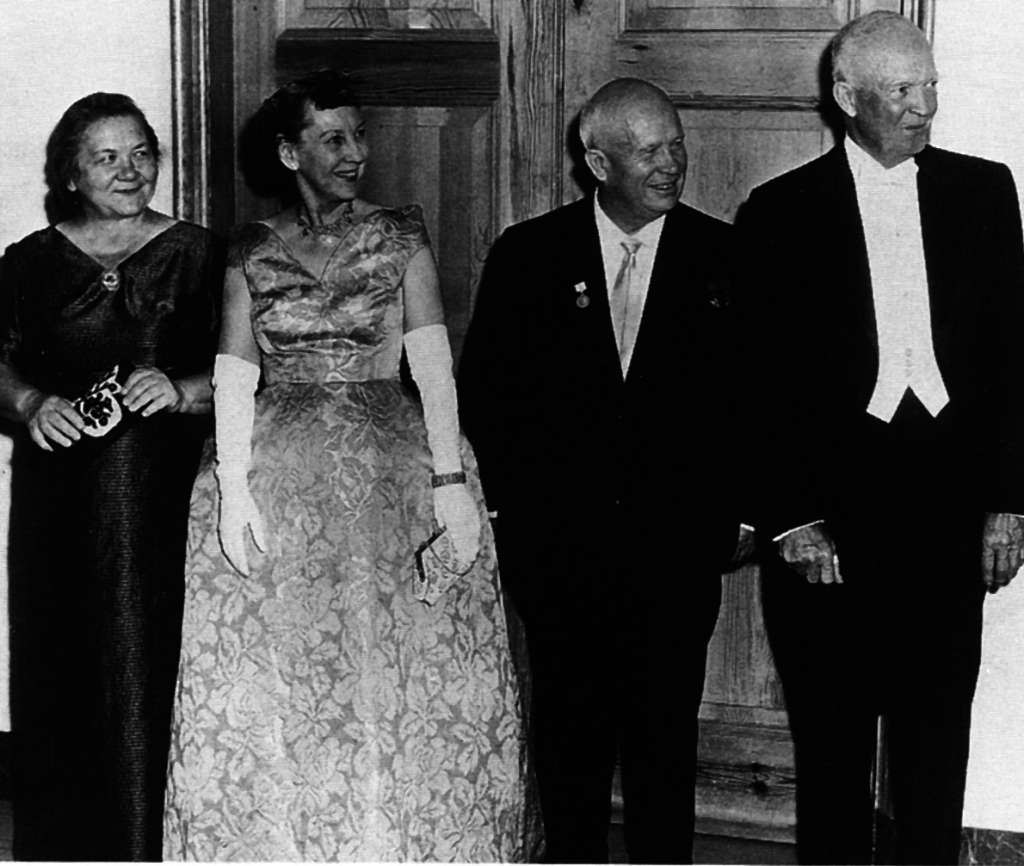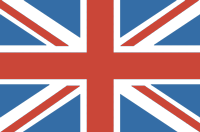A model of Sputnik 1 (Nasa)

On 4 October 1957, something momentous happened to shatter the complacency of 1950s America: a small metal sphere with four antennae began emitting a high beep-beep from far, far away[1. Listen here.].
The Soviet Union had successfully launched the Sputnik 1 orbital satellite, delighting the world’s radio hams with its signature. Its full name Sputnik Zemlya meant ‘Companion of Earth’. Ultimately, it would revolutionise astronomy, navigation and telecommunications.
Meanwhile, the news from the US that autumn was bleak: A reluctant President Eisenhower ordered the 101st Airborne to Little Rock, Arkansas to protect African-American children from segregationist fanatics preventing them from attending school.
The missile gap
Eisenhower was relaxed about Sputnik’s launch, though still angry that inter-service rivalries kept the US from reaching space first. Even when the Navy launched its rival Vanguard rocket the following December, it rose only a few feet before exploding. The Daily Mail dubbed it ‘Puffnik’[2. Stephen E. Ambrose, Eisenhower. The Presidency 1952-1969 (London, 1984) pp. 427-428. Eisenhower thought of consolidating all four services as task forces under the DoD.].
Dictatorships were supposed to be incapable of such technological leaps. But the powerful rocket used to launch Sputnik ramped up American fears of a ‘missile gap’–a fear which would be cynically exploited by John F. Kennedy in the 1960 presidential election–and it exercised professional Cold War warriors who had earlier inflated false fears of a ‘bomber gap’.
In reality, the US had a much larger inventory of nuclear weapons than the Russians – 6,444 bombs in 1957. Even if, in 1961, the Russians had detonated their 50 megatons Tsar Bomba, the world’s most powerful hydrogen bomb, US Strategic Air Command had nearly 2,500 long-range bombers, at home and on overseas bases. General Thomas Powers ensured 134 of them were constantly airborne or ready to take off at just 15 minutes notice. The US had also pioneered aerial refuelling tankers, of which it had 800[3. L. Douglas Keeney, 15 Minutes. General Curtis LeMay and the Countdown to Nuclear Annihilation (New York, 2011). Curtis ‘Iron Horse’ LeMay took over SAC in 1948, but Powers commanded it from 1957 onwards when LeMay became US Air Force supremo. He would go on to be George Wallace’s running mate.].
The Soviets lagged behind in solid-fuel ICBMs, in part because, after Sputnik, Eisenhower authorised the new Minuteman ICBM (still the US standard). Moreover, the SAC’s B-47s and B-52s could have easily destroyed Soviet ICBMs as they were being laboriously liquid-fuelled at launch sites that US spy planes had identified from 70,000 feet[4. On this gap theme see Roderic Braithwaite, Armageddon (London, 2017).].
But Sputnik made the Americans fear sudden annihilation from outer space, ‘like kids dropping rocks on cars from freeway overpasses’, as Lyndon Johnson absurdly put it[5. See Aleksandr Fursenk and Timothy Naftali, Khrushchev’s Cold War (New York, 2006) p. 151.]. More importantly, Sputnik subverted American faith in their can-do scientific and technological superiority.
Laika and Gagarin
In their haste to put Sputnik 2 into orbit to celebrate the 40th anniversary of the Bolshevik Revolution, the Soviets botched the job. The sole casualty was Laika, a stray dog from Moscow, who could not even turn inside the tiny capsule because of the sensors surgically implanted and wired into her body. After four orbits, Laika was overcome by heat; some months later, she was cremated when Sputnik 2 disintegrated on re-entry.

But this PR disaster was forgiven in September 1959, when the Soviets successfully crash-landed Luna 2 on the moon. On 12 April 1961 it was forgotten completely, as cosmonaut Yuri Gagarin orbited Earth for 108 minutes–the first man to venture into space.
Only 5ft 2in tall–a height requirement to fit the small capsule of Vostok 1, Gagarin’s winning smile helped make him an international celebrity. There is a statue of him in Greenwich. “I can see the Earth’s horizon. It has a beautiful blue halo. The sky is black. I can see stars, a pretty fantastic view,” he reported from space. It would not be until 1969 that the Americans landed two men on the moon, eclipsing the Soviet achievement.
Khrushchev’s vision
Following the death of Stalin in 1953, an uneasy collective governed the Soviet Union. But in the wake of Khrushchev’s 1956 ‘Secret Speech’ denouncing Stalin’s depredations to a Party audience, he felt emboldened to make himself primus inter pares[6. On either side of the Sputnik launch, Mikhail Kaganovich was exiled to manage a potash mine in remote Perm, Vyacheslav Molotov was posted to the embassy in Outer Mongolia, and Georgy Malenkov to run a hydroelectric plant in Kazakhstan. Both KGB chief Ivan Serov and the war hero Marshal Georgy Zukov were also bundled into retirement since Khrushchev feared such powerful personalities.].
Khrushchev significantly pruned Soviet forces, shedding millions of men from the ‘green army’. New naval battle cruisers were scrapped since he regarded surface ships as ‘fodder for sharks’. Attempts to build long-range bombers were abandoned, and the plants were repurposed to make missiles, submarines and commercial aircraft. The Soviet Navy could launch ballistic missiles from diesel-electric submarines by 1958, and from its first generation nuclear subs two years later.
The space race was part of a broader concerted effort to propel the Soviet Union into the future, finally realising the technocratic fantasies of the early Bolshevik period[7. William Taubman, Khrushchev. The Man and His Era (London, 2003) pp. 379-380.]. Inspired by the farms of Iowa, Khrushchev moved millions of people to virgin lands in the east that were one and a half times larger than California, though the cold and dust soon eroded any productive gains[8. Odd Arne Westad, The Cold War: A World History (London, 2017) p. 208.]. Science and technology was a source of national pride to ordinary Russians, notably in mathematics, electromagnetics and quantum electronics. But the country made Kalashnikov AK-47 assault rifles (100 million are in use) and Lomo cameras while ordinary people had to wait years for refrigerators or vacuum cleaners[9. For a brilliant blending of fact and fiction on this period see Francis Spufford, Red Plenty. Inside the Fifties’ Soviet Dream (London, 2010).].
Mickey Mouse
When Khrushchev visited the US in 1959, he presented Eisenhower with a replica pennant from the Luna moon landing. That Soviet technical prowess, however, was not so evident in the Chairman’s own mode of transport. The passengers on the giant Tupolev Tu-114 airliner included its designer’s son as a kind of hostage; engineers spent the flight anxiously monitoring the engines for cracks.
The US visit was not a success. The peasant Soviet leader was resolved to be unimpressed by the wealth he witnessed and the glitzy events to which he was invited (though he was furious that American and Soviet security officers prevented him visiting Disneyland). At Hollywood’s Twentieth Century Fox, Khrushchev brightened up to see Marilyn Monroe, but overall the visit was punctuated with outbursts of ill-temper, though reportedly he and Eisenhower got on well in private.

The US president’s 1960 visit to Moscow was cancelled after the Soviets succeeded in shooting down a U2 spy plane overflying Sverdlovsk and capturing its pilot. Ironically, Air Force One was itself being covertly fitted with high-res spy cameras for the President’s visit.
Space did not unite mankind during the Cold War except in a platitudinous sense. The economics of space exploration, though, would eventually bring the countries closer: Nowadays cost-conscious NASA depends on Russian rockets to send its astronauts to the International Space Station and Russian-manufactured engines to launch its own satellites[10. Ken Dilanian ‘Why Does the US Use Russian Rockets to Launch Its Satellites?’ nbcnews.com 15 November 2015.].









Join the discussion
Join like minded readers that support our journalism by becoming a paid subscriber
To join the discussion in the comments, become a paid subscriber.
Join like minded readers that support our journalism, read unlimited articles and enjoy other subscriber-only benefits.
Subscribe